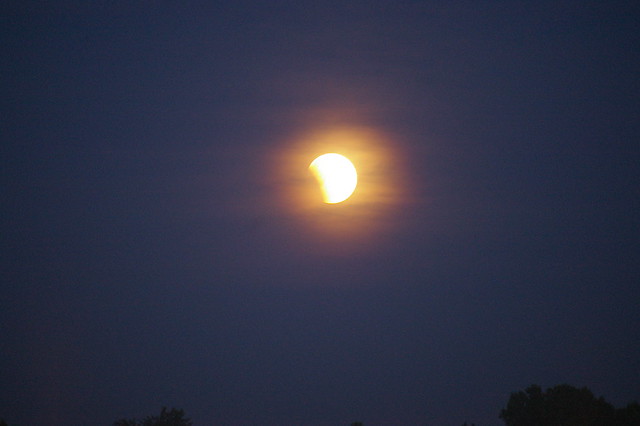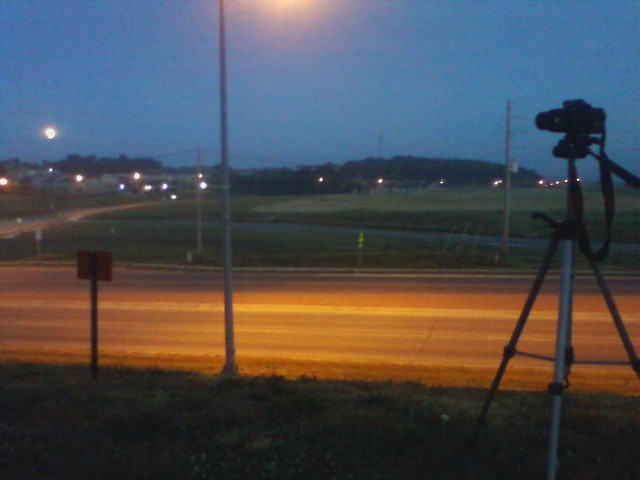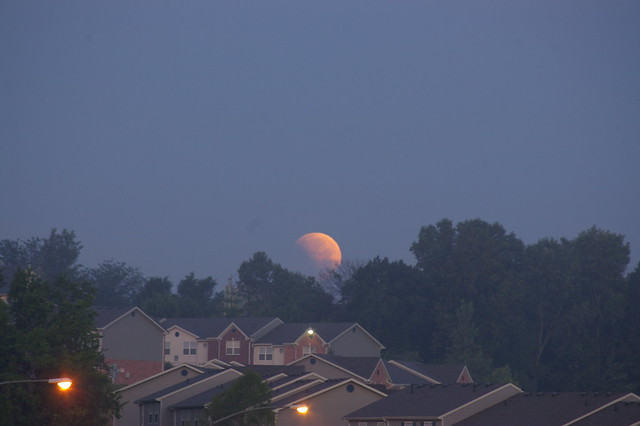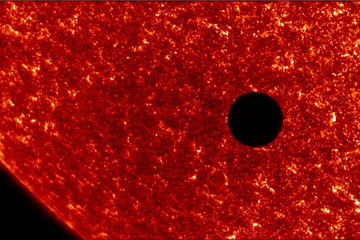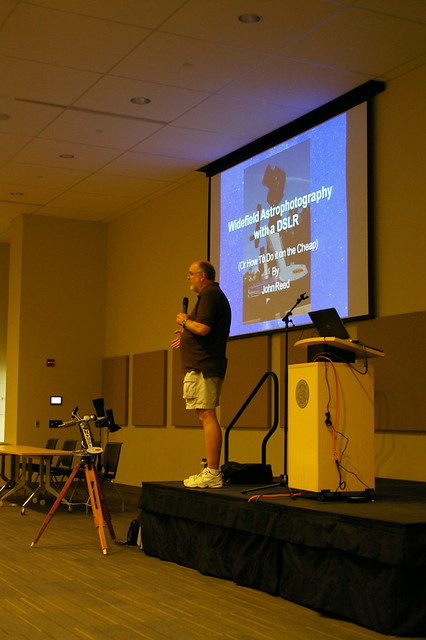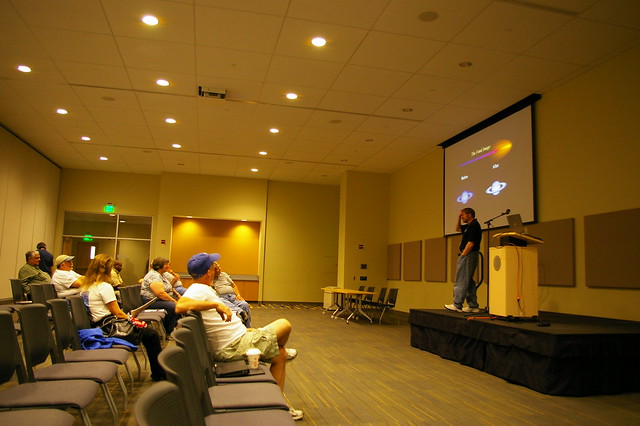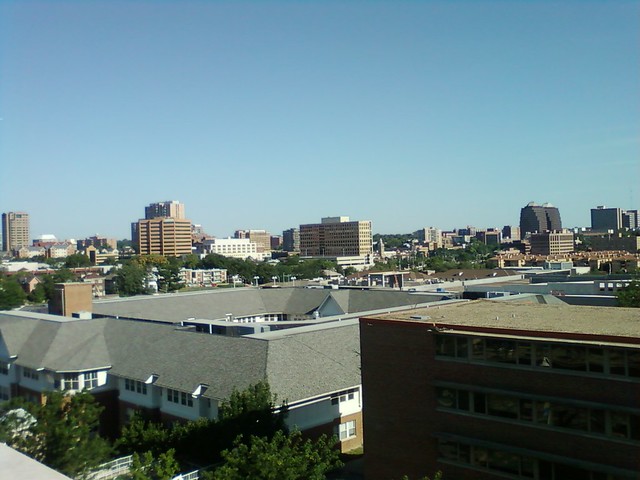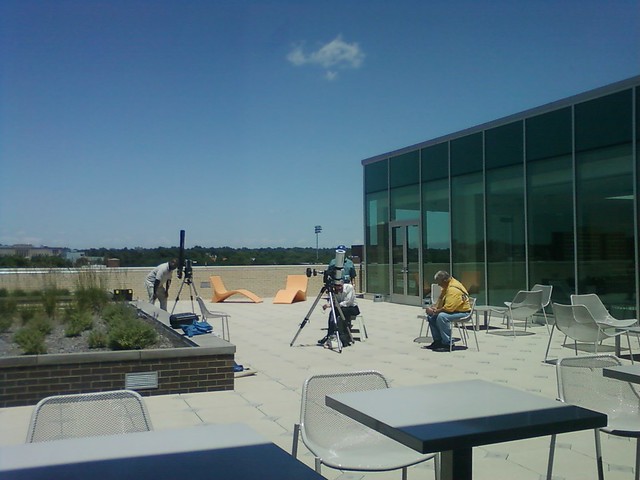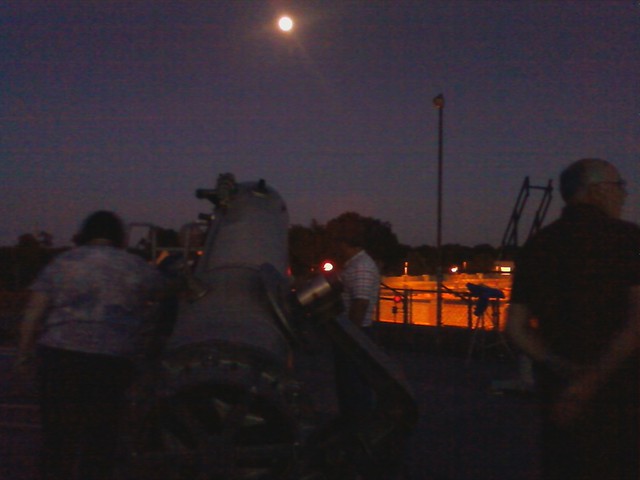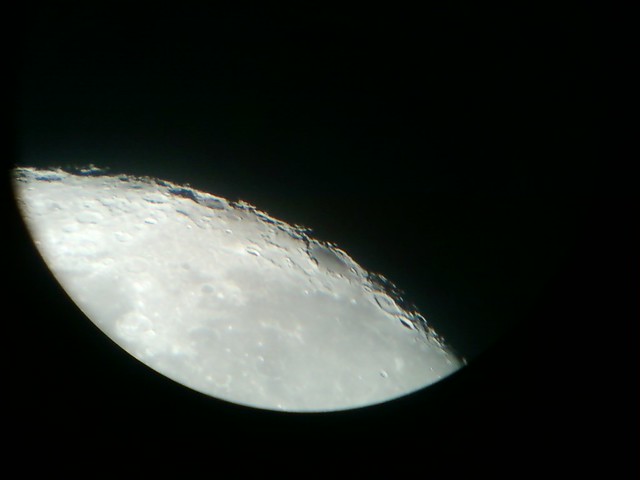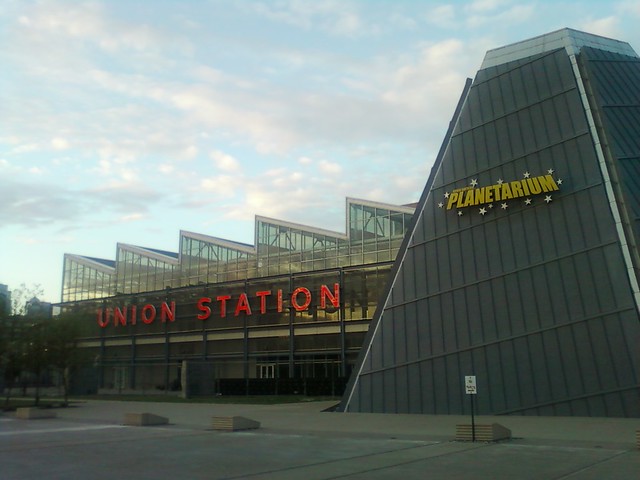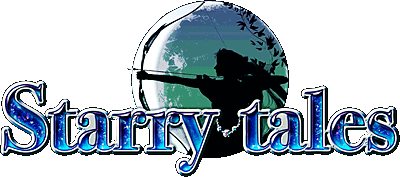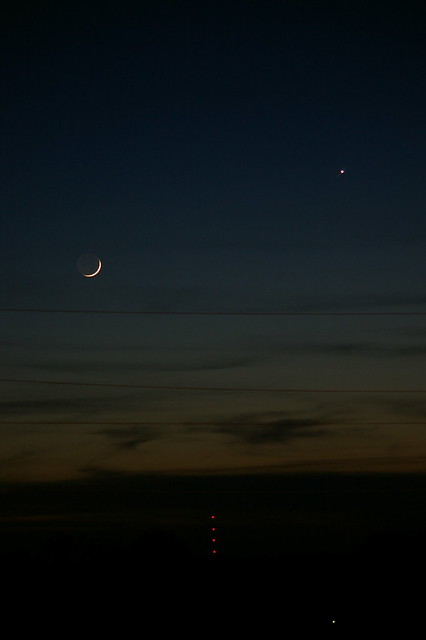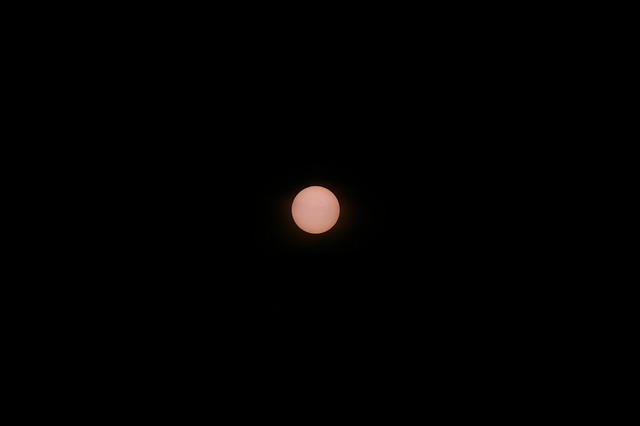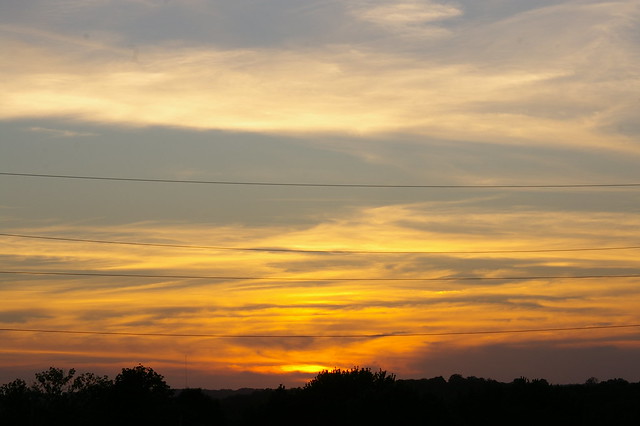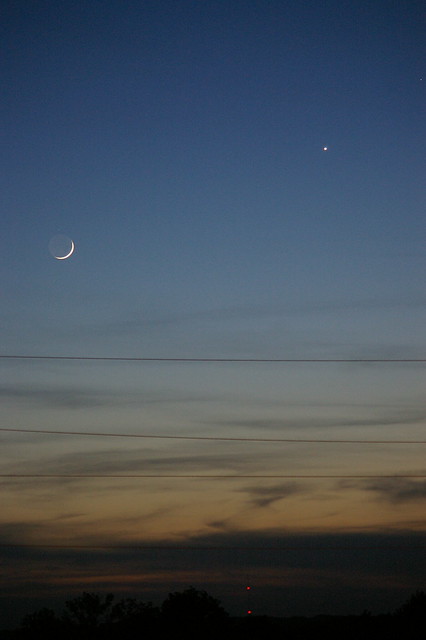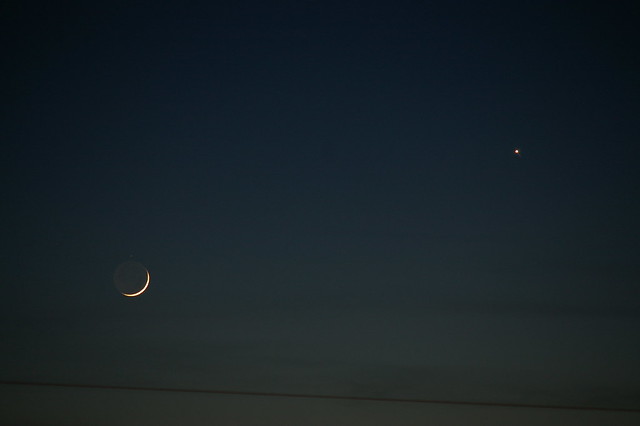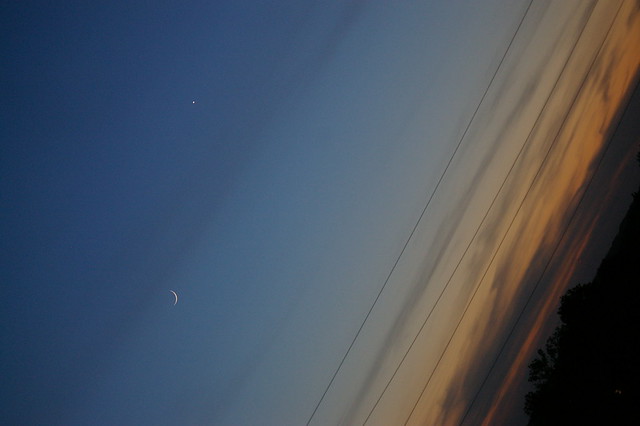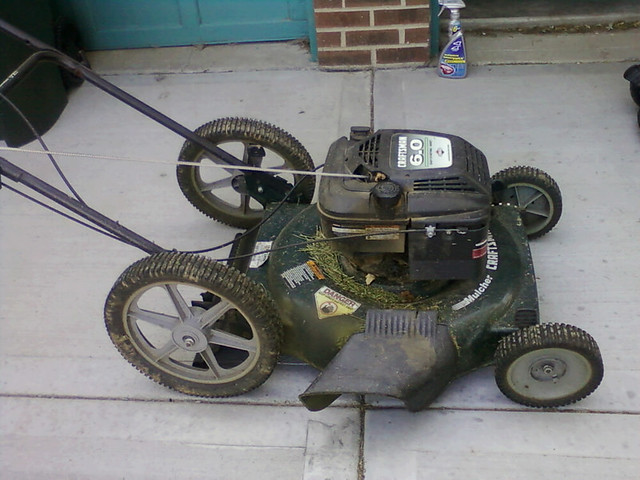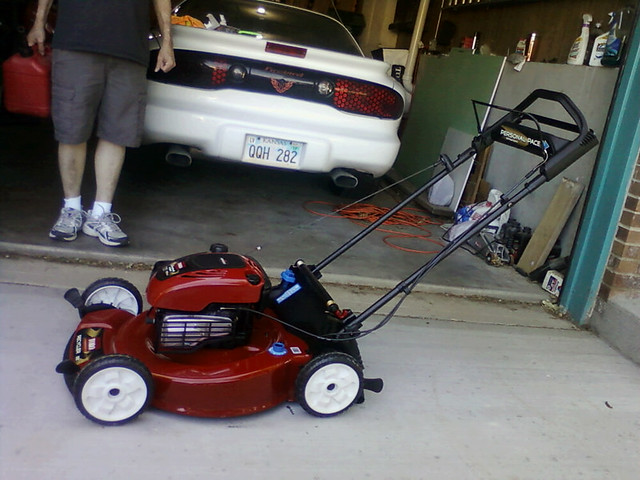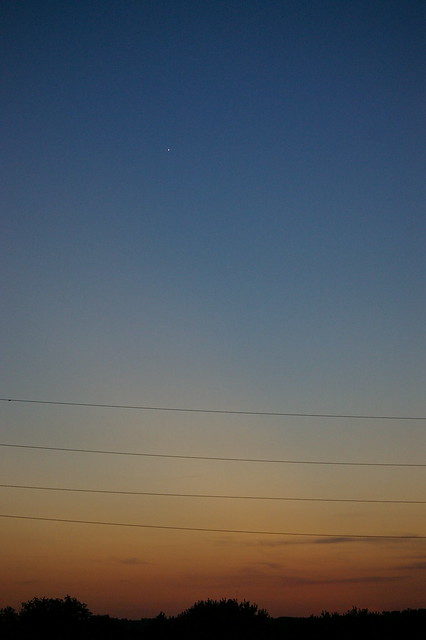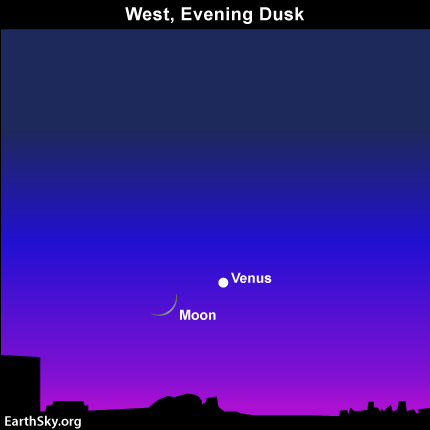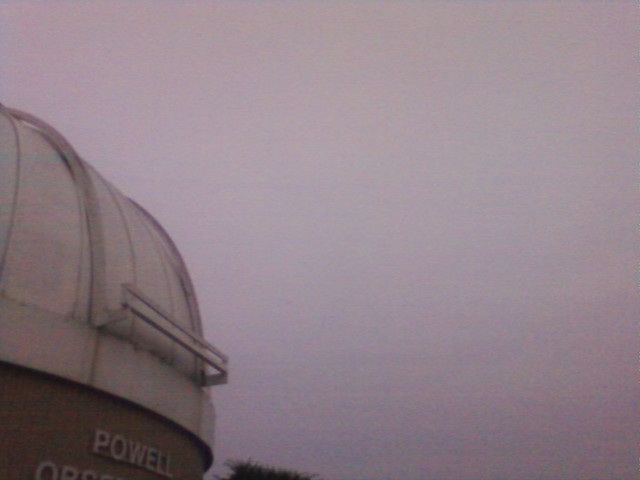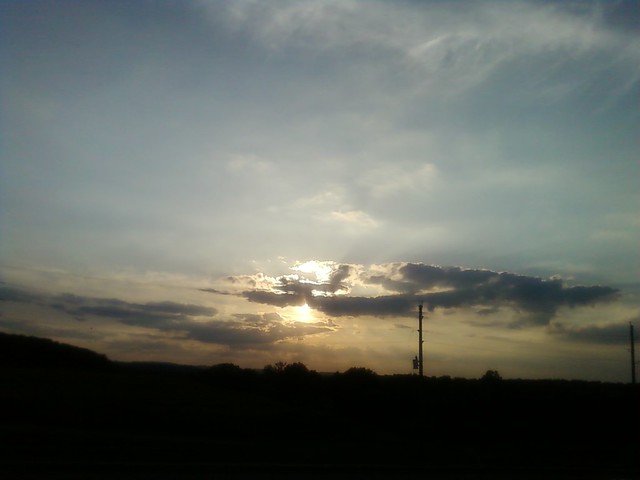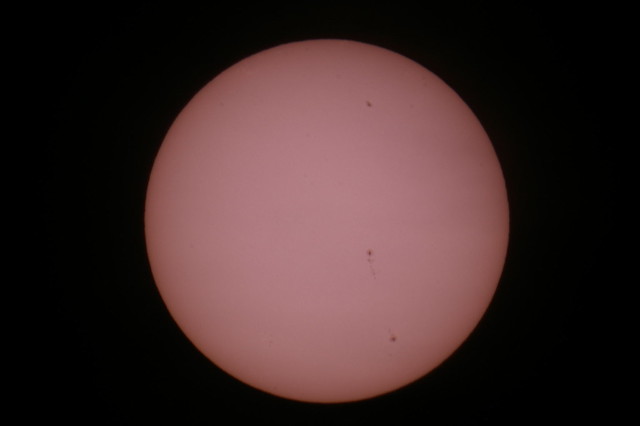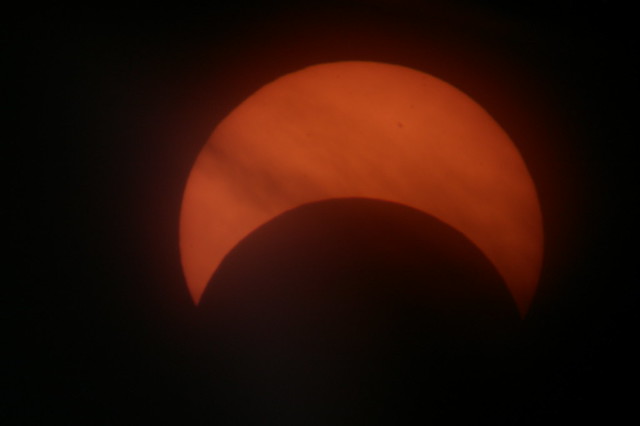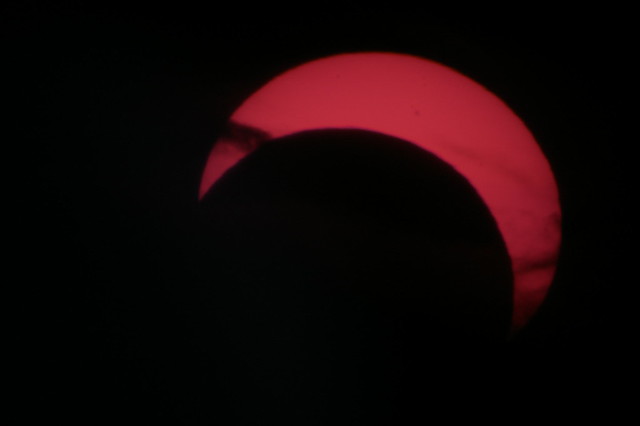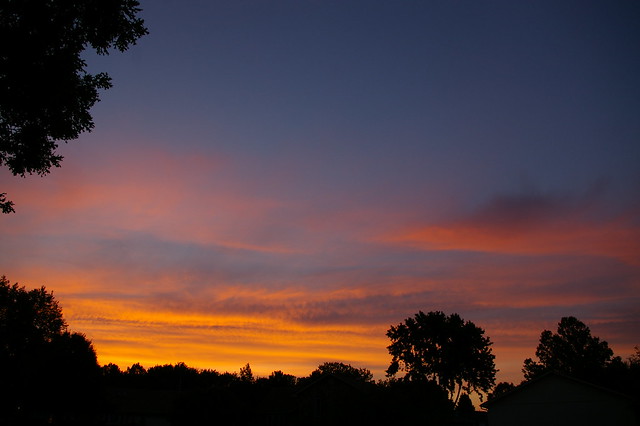I decided to take a day of vacation from work yesterday. Even though the Transit of Venus wouldn’t start until shortly after five o’clock in the afternoon, I didn’t want to miss any of it, especially the beginning. I wiled away the day reading, baking bread and making strawberry shortcake. I also tested the scope (but not the camera) around noon, getting a clear picture in my mind of the current configuration of our nearest stellar neighor.
As the clock approached four in the afternoon, I laid out all my equipment, sunscreen, sunglasses, umbrella and collapsable chair, making sure I had everything I would need for an observing session that would last several hours on a slightly warmer than normal and sunny June afternoon. My prayers had been answered in part, at least, for clear skies (releatively clear, except for some humidity, haziness and wispy stratus clouds). I proved to be my own worst enemy, though, because while washing my hair, I managed to get an entire palmful of shampoo in my right eye, which happens to be my ‘good’ eye – the one I use to focus and observe with. My eye watered for the rest of the day, but at least didn’t appear to have any problems focusing.

I packed everything in the car and had my husband drive me to my previously selected observing spot. It’s my new favorite location for observing and photographing day-time astronomical events that require an unobstructed view of the western horizon (and it’s close to home so I don’t spend time and gas money to get there). In the last few weeks from this spot, I’ve observed a solar eclipse, earthshine on the moon (with Venus nearby), a lunar eclipse and yesterday my first (and only) Venus transit. I unpacked the equipment, said goodbye to my husband (who would return later to catch a glimpse of the ‘black dot’ that would be Venus crossing the sun) and started setting up the scope. My dad joined me, sometime between 4:30 and 5:00 p.m., as he got tied up with rush hour traffic on US-73 southbound from north Leavenworth to south Lansing.
I had parked the scope when I used it around noon, leaving it in a polar mount configuration. I knew I wouldn’t be able to re-align it to Polaris when I transported it from my backyard to this other site, but I could get ‘in the ballpark’ enough to track the sun and take photographs. The most challenging aspect of taking photographs through the Meade ETX-90 with the Pentax K100D attached to it is focusing. The viewfinder on the camera presents a very small ‘live’ view of the object (in this case the filtered image of the sun). The sunspots, which appeared very large and distinct when observing through the telescopes eyepiece under magnification, were tiny pinpricks through the camera. Focusing became easier once the large black dot of Venus appeared, but before that, resolving the sunspots proved troublesome. With that in mind, here’s a photo from immediately prior to the transit of Venus commencing:
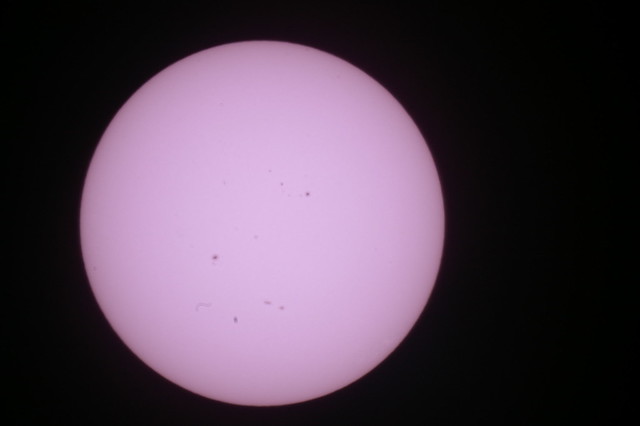
I choose this location also in the hopes that people would see me on the hill overlooking Main Street and stop by to have a look (or at least ask me what the heck I thought I was doing so I could then explain and convince them to take a look). Over the course of the next three hours, I had between fifteen and twenty people stop and take a look at the transit through my telescope. The first group to stop had seen me there before, back in May for the solar eclipse. I asked them to wait a couple of minutes because I was taking a serious of photographs to capture the first and second contacts of Venus:

One of the last group included an entire family who had seen me on their way to a baseball game (for their young son) and stopped on the way back after the game. They pursuaded their grandmother to leave the car and take a look. By that time though, the sun had entered some thicker clouds and was close to setting, so the light getting through the solar filter created a dim red hazy image, but Venus’ black sillouette was still clearly visible.
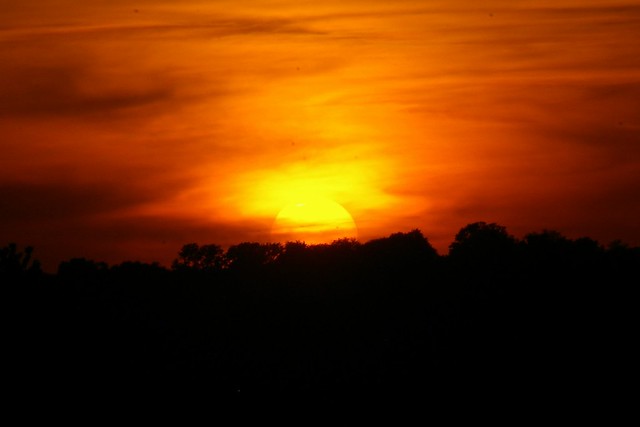
After the sun set, Dad and I packed up the equipment and said our goodbyes. We were both tired, from standing, sometimes bending over, occasionally sitting, but always baking in the late afternoon June sun. I went home, ate some leftovers, grabbed 140 photos off my cameras memory card and selected one or two to upload and share with friends and family. I didn’t have the energy last night to review so many photos. I called my daughter, who lives in Texas, to see if she had a chance to witness the transit. She reported she did, as her university setup several scopes near their Environment Sciences lab building and she got to see the sun through a hydrogen-alpha filter (which I am saving up for as they are not cheap). I also tuned in to NASA’s live feed both on my laptop and via DirecTV (channel 289) for a few minutes before succumbing to my need for sleep.
First thing this morning when I awoke, I began sifting through the photos and settled on thirty-nine good shots to upload and share. I discovered, though, that I have some debris on my camera mirror and will need to have it cleaned. See if you can find the debris that looks like a sunspot but travels around the surface of the sun (but not the frame of the picture).
Later this week, I will attempt to qualify for an observing certificate from NASA using the Paralax Activity Method #1 (I can’t do the other two because I only witnessed about half of the transit before the sun set). But first I’ll read and review the Mathematics of the Transit of Venus to make sure my aging brain remembers college math.
I am so glad I had the opportunity to witness the Transit of Venus. I sincerely hope you took advantage to sneak a peak. Only our grandkids (or great-grandkids) will see the next one, in 2117.

